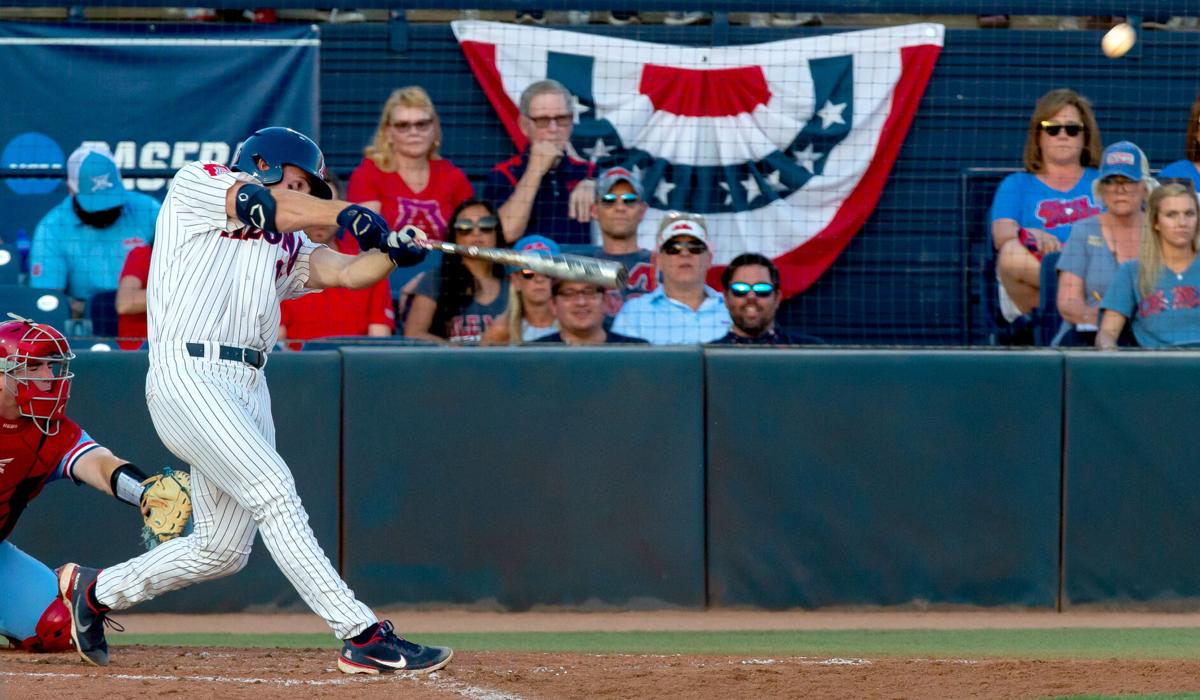At no time in the 2012 football season do I recall Oregon coach Chip Kelly saying the Ducks had the best offense in Pac-12 history. He would’ve been right; the Ducks averaged 49.6 points, but Kelly wasn’t exactly a quote machine.
Nor do I recall Lute Olson declaring Arizona’s 1997-98 offense the best in conference history, even though the Wildcats averaged 90.8 points and no Pac-12 team has matched it since.
But a few ticks before bedtime Sunday night, Arizona baseball coach Jay Johnson opened a few sleepy eyeballs when he said “I think this is the best offense in Pac-12 history. I’m not a historian, so I can’t validate that, but if there’s one that’s equal, I’d like to see what it looked like.’’
Still waiting.
No one stepped forward to dispute Johnson and no one will. He was man enough to speak the truth when most coaches would fail to add historical perspective to a season for the record books.
As I type this, Arizona leads all of college baseball with 721 hits and 526 runs. The Wildcats are so prolific that no other Pac-12 team has scored more than 416 runs. No other Pac-12 team even reached 600 hits.
That’s how you punch a ticket to Omaha, baby. Hits and runs.
After Arizona beat Ole Miss 16-3 to win the Tucson Super Regional late Sunday night, the Rebels, who are No. 2 in the NCAA in hits — 63 behind Arizona — were confused. No kidding. Leadoff hitter Donta Williams went 8 for 14 in the series with a combined 13 runs and RBIs. He played like a latter-day Kenny Lofton.
Brandon Boissiere was even better. He went 11 for 15. Who does that in a Super Regional? The nation’s best freshman, Jacob Berry scored four runs, had five hits and six RBIs. He hit one home run so far that the ball was rumored to have been found in Ajo.
It was all a bit confusing to Ole Miss coach Mike Bianco. While trying to give credit to the UA’s lineup, he got names mixed up.
“The name escapes me, it starts with an H,’’ he said, unable to remember that Ryan Holgate, who hits sixth and seventh in Arizona’s lineup, went 5 for 12 with four RBIs. “There were no outs in the bottom of the lineup, either.’’
Arizona has hit .363 in postseason games. It so impressed Ole Miss outfielder Hayden Leatherwood that he said “They were hitting really good pitches, not just pitches down the middle.’’
Johnson added the finishing sentence, saying “It was just an assault on quality at-bats.’’
Two months ago on a chilly Friday night in Pullman, Washington, the Wildcats were embarrassed 21-2 by a WSU team that didn’t break .500 this season. At the time, Arizona didn’t look much like a College World Series team. They were 7-6 in the Pac-12. If you had said Arizona would go 21-9 to win the league championship, no one outside the UA locker room would’ve bought it.
But that loss triggered possibly the most sustained prolific outburst of offense in school history. Over its next 17 games, Arizona outscored opponents 175-73. It went 15-2. That’s over 10 runs per game.
It beat WSU 13-8 and 14-8 before leaving Pullman. It beat Utah 15-3 and 11-1. It stunned fellow CWS qualifier Stanford 20-2. And it beat Washington 17-16 and 11-2 and Oregon State 12-4.
Earlier in the year it hammered Oklahoma 20-13 and 12-1, Oregon 15-2 and ASU 14-2.
I’m not saying this is the most potent Arizona offense in history. The 1974 Wildcats, Jerry Kindall’s second UA team, scored a school-record 700 runs. That’s 48 more than any other Arizona cub.
But the ‘74 Wildcats did not play a punishing schedule, no Stanford, no ASU, no UCLA, no Oregon State. They beat UTEP 27-6, Fairfield 19-0, Colorado 23-1 and Azusa Pacific 15-1. The ‘74 Wildcats went 58-6 but were eliminated from College World Series contention by Northern Colorado, of all teams.
The most imposing lineups in UA history were those of the 1980 and 1986 national champions. The ‘86 champs hit .337 and did not rely on freshmen and sophomores the way Jay Johnson relies on productive underclassmen Berry, Bullard, Boissiere, Holgate and Daniel Susac.
The ‘86 Wildcats were older guys, juniors and seniors at the top of their game, a stacked lineup with CWS most valuable player Mike Senne, .400-hitting catcher Steve Strong, future major-leaguers Chip Hale, Dave Rohde and Tommy Hinzo, and first baseman Todd Trafton, who was as feared as any cleanup hitter in college baseball.
The ‘80 champs were also much older. When you’ve got future major-leaguers Terry Francona, Johnny Moses and Dwight Taylor at the top of the lineup, followed by Trafton-like first baseman Wes Clements, you can win it all. They did.
But it wouldn’t be a surprise if 20 or 25 years from now, someone searching for a historical perspective on what a 2040’s Omaha-bound Arizona team accomplishes by comparing them to the 2021 Wildcats.
Remember, it’s Holgate. It starts with an H, which stands for hits, which leads to runs, which is the surest route to Omaha.





